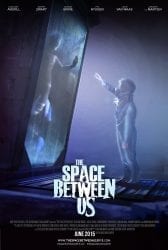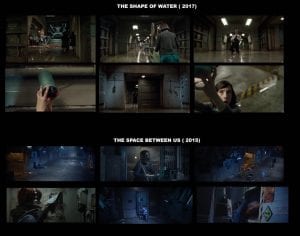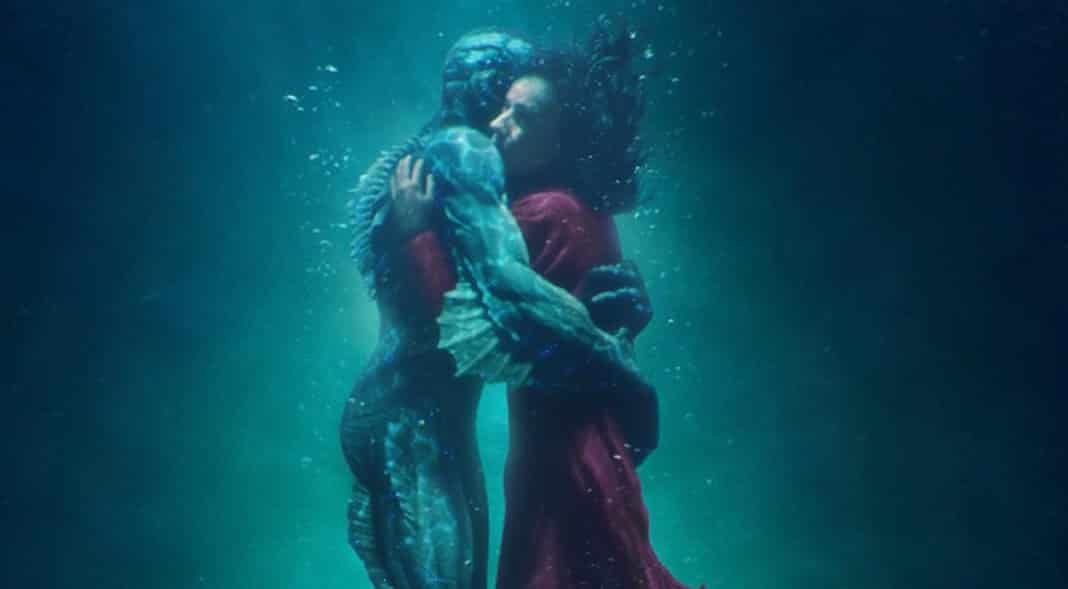The Shape of Non-Plagiarism
When a plagiarism story isn't a plagiarism story...
 The Shape of Water is a 2017 film written and directed by Guillermo del Toro about a female janitor who rescues a humanoid amphibious creature from a lab to spare its life.
The Shape of Water is a 2017 film written and directed by Guillermo del Toro about a female janitor who rescues a humanoid amphibious creature from a lab to spare its life.
The Space Between Us is a 2015 short film by students at the Netherlands Film Academy (NFA) that also features a female janitor who rescues a humanoid amphibious creature from a lab to spare its life.
Between the plot overlaps the the stylistic similarities, many people began to feel that del Toro had committed an act of plagiarism. Though the controversy is routinely said to have begun this past weekend, users on Reddit were discussing the similarities back in July, months before The Shape of Water was released.
At that time Reddit user JPshieux pointed to a now-removed Facebook post from one of the creative team on The Space Between Us who said the decision whether or not to take legal action would be up to the school since it was their graduation project.
Del Toro responded to the allegations, saying that he had been working on The Shape of Water long before The Space Between Us had been released and pointed out that he had had two other films, Hellboy and its sequel, The Golden Army, which both featured aquatic creatures in the tanks of laboratories.
Despite the denials, the controversy did blow up again this weekend with fresh Reddit posts about the similarities and a new round of blog posts about the two films. However, this time it would be the NFA itself that would speak up to quash the controversy.
The academy released a statement saying that the films “are not in any conceivable way interlinked or related.” The statement came after a screening of The Shape of Water at the NFA and an extended conversation between the team behind The Space Between Us and del Toro.
Still, the statement hasn’t placated all of del Toro’s critics, many of whom just see too many similarities between the film to ignore. However, this is ultimately a story of amazing coincidences, tropes in cinema and how we perceive similarity, not a story of plagiarism.
Still, it is an interesting story and one well worth talking about.
Why It’s Not a Plagiarism Story

The reason that this is not a plagiarism story is a simple one: Del Toro was working on The Shape of Water long before The Space Between Us was first screened.
Major Hollywood films take a long time to produce and it’s safe to say that any film released this year was likely being worked on well before 2015.
According to del Toro, he began working on the project in 2011, when he had his first meeting with the film’s associate producer Daniel Krauss to begin working on the first script of the film (Krauss is also working on an upcoming novelization of the film).
However, even if we only look at things independently verifiable, there’s clear indication that the film was in production long before its alleged source was released. John Knoll, the visual effects supervisor for Pacific Rim, asked del Toro what his next project was in 2013 for del Toro to tell him about The Shape of Water.
In 2014 del Toro arranged an introduction between himself and Sally Hawkins, the lead actor in The Shape of Water.
In short, del Toro was working on his project long before The Space Between Us was ever first screened. Given how core the alleged plagiarisms are to his work it’s pretty much impossible for del Toro to have plagiarized from the NFA students.
The allegations also ignore key differences between the works. The Space Between Us takes place in a post-apocalyptic world where the air is unbreathable where The Shape of Water takes place in 1960s United States. The Shape of Water, being a much longer film, has much more time to focus on the relationship between the janitor and the sea creature, changing the tone away from the more action-oriented short film.
Finally, many of the allegedly copied elements are also tropes that can be found in other films such as Creature from the Black Lagoon, which also featured a humanoid amphibious creature.
In short, while the similarities are striking, the evidence is also overwhelming, there’s simply no plagiarism story here.
Coincidences and Perception
Amazing coincidences do sometimes happen and can be confused for plagiarism. For example, in 1951, two characters named Dennis the Menace appears in comics on the same day. However, the two authors, working an ocean apart before the internet, were unaware of each other’s work and had simply created two very different characters with the same name.
But that is one of the challenges of detecting and dealing with plagiarism, it’s all about disproving coincidence.
When, during a plagiarism analysis, I see a string of 50+ words identical between two works, I know the odds of those strings being pure coincidence is astronomically low. Whether it’s plagiarism or a common source needs to be determined, but the chance of it being a coincidence is almost nil.
Still, it is, at least theoretically, possible and, if one person wrote, another could too. It’s just that the odds of it being copied is so much greater that it’s very safe to dismiss coincidence.
But, with movies, we don’t have strings of text (unless the script was copied verbatim). Instead, we have ideas, images, styles, characters, plot points and so forth. Things can often appear to be more original than they are. As such, when those things are copied or mirrored, it can often feel more like plagiarism than it is.
To be clear, film plagiarism does happen and is actually very common, as Shia LaBeouf showed us in 2013. But film is, at times, an artistic medium where it’s easy to see plagiarism where there is none, largely because we often see originality where we there is none.
This is a testament both to the power of film to move us and to filmmakers and their ability to make established ideas feel new. However, it also speaks to the medium itself and the challenges in separating what is original from the building blocks that originality is based upon.
Even after reading all of the articles and seeing the evidence first hand, it still felt like plagiarism to me when viewing The Space Between Us. I know it isn’t and I’m confident it’s not, the evidence is overwhelming, but the gut feeling is unmistakable.
It’s not plagiarism, but without the evidence proving as such, it would have been very hard to convince many people it isn’t. The question to ask isn’t “Is this plagiarism?” but rather, “Why does this feel like plagiarism when it isn’t?”
That question, unfortunately, is a tough one to answer. But it mostly comes down to striking overlaps caused by a combination of coincidences and overlapping tropes. As humans we’re trained to see similarities more than differences, so it’s easy to hone in on those without asking why those similarities are there or just how unique they are.
That can make something seem very much like plagiarism, even when it’s demonstrably not.
Bottom Line
Even though this story isn’t a tale of plagiarism, it’s still an important one to talk about. With film, we don’t have automated analyses we can run or text that we can highlight. Plagiarism and the perception thereof often comes down to feeling but, as this case shows, that feeling can be wrong.
This makes it important to examine why it feels this way. Is it simply a case of amazing coincidences, like the Dennis the Menace one, is it one of similar styles or is it one of tropes used by both films?
Honestly, the answer to that question will likely be different for different people based on their experiences with film. Many, at least according to the comments, didn’t get the feeling it was plagiarism at all.
That makes this case something of a Rorschach Test. We know the answer to the plagiarism question but, by seeing how it viscerally feels, we can understand more about how we approach cinema and originality in it.
That, in the long run, may be very helpful in discussing future cases of suspected plagiarism in film.
Want to Reuse or Republish this Content?
If you want to feature this article in your site, classroom or elsewhere, just let us know! We usually grant permission within 24 hours.
